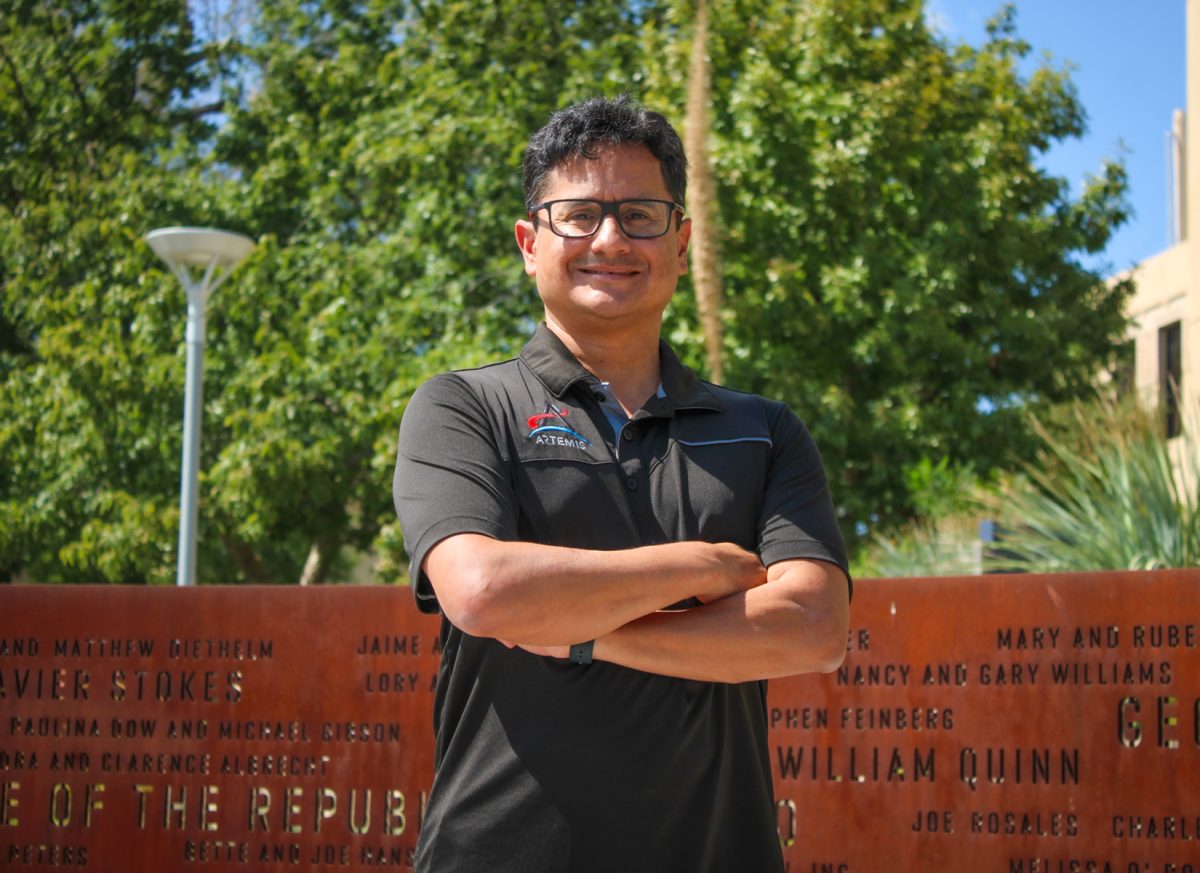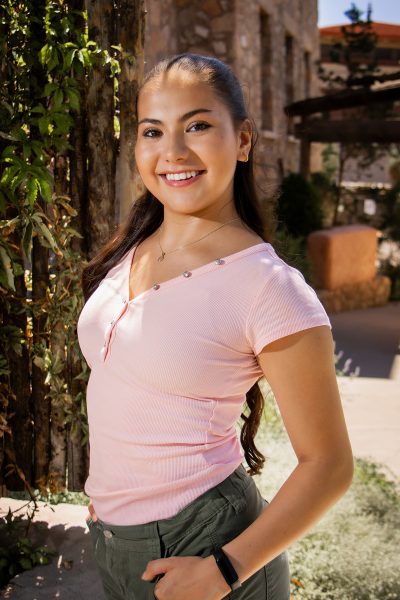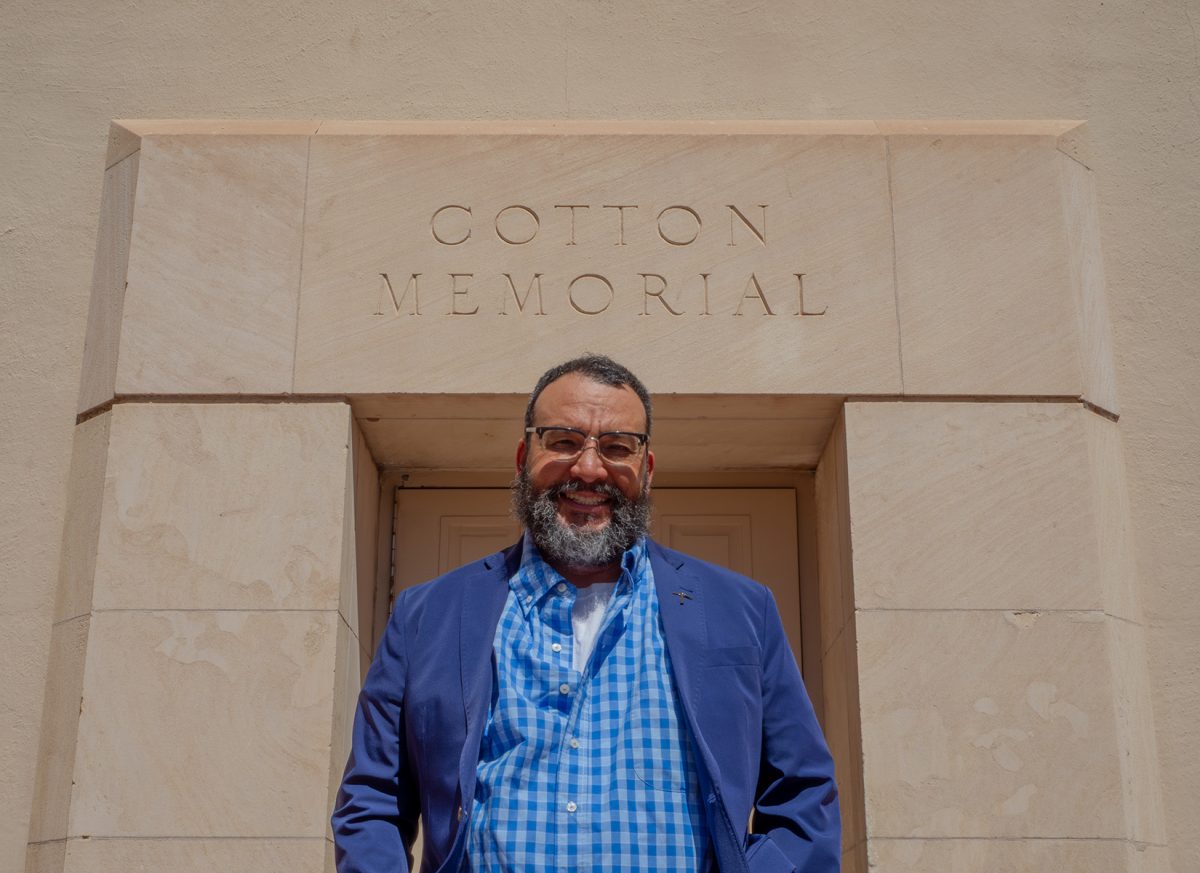In 2027 astronauts will attempt to land on the moon for the first time in more than 50 years and The University of Texas at El Paso (UTEP) will have had a hand in guiding them there.
Jose Hurtado, Ph.D., a professor of Earth, Environmental and Resource Sciences, received a NASA grant in late 2024 to join the Lunar Mapping Program (LMAP), a U.S. Geological Survey initiative. He will also work with the teams preparing for the Artemis II and Artemis III missions, the latter set to mark the first human landing on the moon’s South Pole.
For Hurtado, the chance is both a professional milestone and childhood dream.
“I’m honored and proud that I can be a small part of that,” Hurtado said. “Doing something as grand as putting human beings on the moon and if I can’t walk on the moon myself this is the next best thing.”
NASA’s Artemis program is the first effort to send astronauts to the moon since Apollo 17 in 1972. Artemis II, scheduled for early 2026, will be the first crewed mission sending four astronauts, including the first woman and first person of color to travel to the moon. They will be sent into orbit before returning to Earth. Artemis III, planned for 2027, will attempt the first human landing at the lunar South Pole.
Hurtado joined the Artemis II science team this year, where his role focuses on operations and communication.
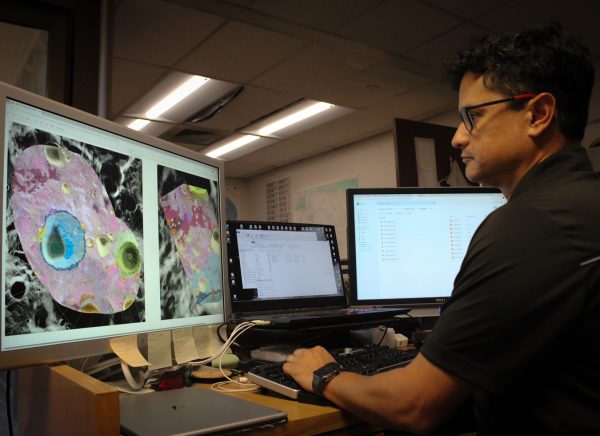
“In the science evaluation room, I will be the one on the radio loop in mission control, talking to flight controllers,” Hurtado said. “It’s a pretty important job. It’s going to take a lot of understanding of not just the science, but also the mission operations making sure the lines of communication are open and clear.”
With Artemis III, Hurtado will take on a more science-focused role during the two-week mission. He and his colleagues will evaluate potential landing sites, create detailed geologic maps of the Moon and help plan surface activities. Once the mission launches, Hurtado and his team will be stationed at Mission Control in Houston, monitoring the astronauts’ progress through live video, radio and incoming data.
Even after the spacecraft completes its mission, Hurtado said his team’s work continues on the ground.
“My team is responsible for putting together the preliminary science reports and examinations of the samples they bring back,” Hurtado said.
At the heart of Artemis III are scientific questions that could reshape the understanding of the moon and solar system. Scientists hope to uncover clues about the moon’s origins, study its craters, investigate how a planetary surface evolves without an atmosphere, and examine ice deposits at the south pole as a potential resource.
Hurtado’s expertise is grounded in his work with LMAP as the project tasked a ten-person team with producing detailed maps of the South Pole and testing new methods to guide future exploration.
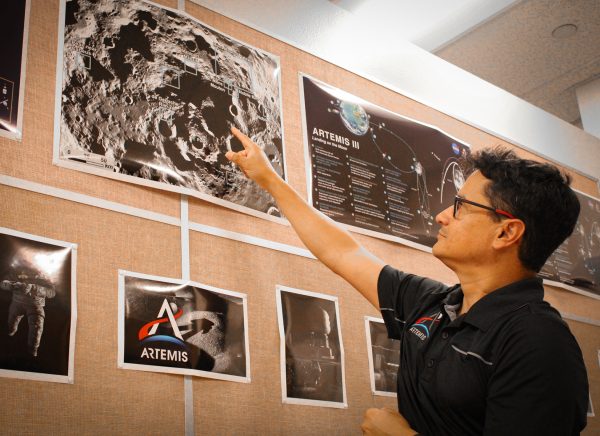
“The interest there was to develop new methodologies and ways of thinking about making geological maps that might be applicable for exploration of the South Pole area of the moon.” Hurtado said.
For Hurtado, the missions are not just about discovery but about sharing the excitement with students and the broader community. Two of his doctoral students already have roles in Artemis III preparation and simulations, and he said he plans to bring lessons from those missions into his courses and outreach.
“I want to bring this excitement of exploration to the students here,” Hurtado said. “It could be a big motivator for getting into science or engineering, especially geo science.”
Hurtado also envisions hosting watch parties during the Artemis missions to help students connect with the program.
“I hope that Artemis and the names of these astronauts and the places they’re going to go to become sort of household talking points as we get closer to these missions,” Hurtado said.
While Hurtado’s contributions may take place on earth, their impact will reach as far as the lunar surface, and as close as his own classroom, as he helps UTEP become a part of the next chapter of space exploration.

